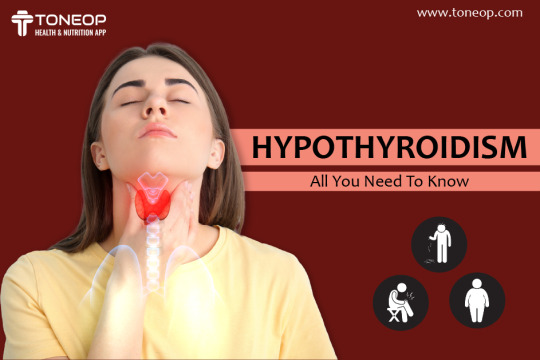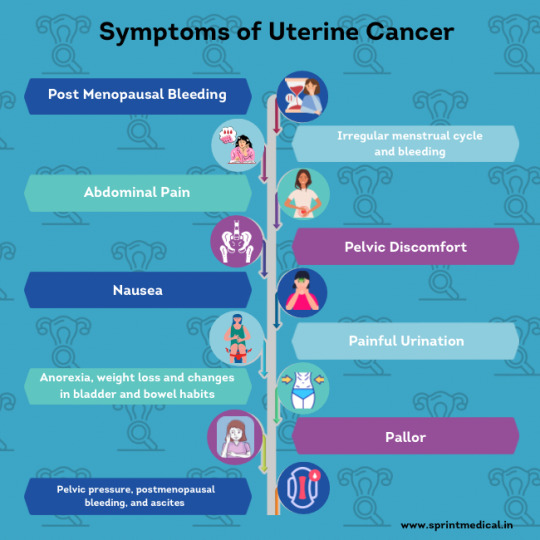#intermenstrual bleeding
Text










Der Bergdoktor S17 E02
#whump#unconscious#seizure#passing out#collapsing#germany#pregnant#heavy bleeding#hospital scene#der bergdoktor#internal bleeding#whump blog#and all that on and one day after the wedding#intermenstrual bleeding
78 notes
·
View notes
Text
#breakthrough bleeding#periods#women’s health#reproductive health#womens health#menstruation#intermenstrual bleeding#health information
2 notes
·
View notes
Text
What are the causes of intermenstrual bleeding? How it is treated?
Causes and Treatment of Intermenstrual Bleeding
Intermenstrual bleeding (IMB) refers to vaginal bleeding at any time during the menstrual cycle other than during normal menstruation. It can sometimes be difficult to differentiate true IMB bleeding from metrorrhagia (irregularly frequent periods) [1]. Here are some possible causes of IMB:
Hormonal changes: Changes in hormone levels can cause…
View On WordPress
1 note
·
View note
Text
Understanding Endometriosis
Endometriosis is a chronic disease that affects 6-10% of women of reproductive age worldwide. It is one of the obscure women’s health conditions which is characterized by the implantation of functioning endometrial tissue outside the uterine cavity.
Endometriosis is associated with a broad range of symptoms including dysmenorrhoea (menstrual pain) ,dyspareunia (pain during intercourse), chronic intermenstrual pelvic pain, and Infertility.
Endometriosis is a chronic non malignant uterine disease that can affect women in their reproductive years. The word endometriosis comes from the word endometrium or the ‘lining membrane inside the uterus’.
“Endo” implies inside, and “metra” means uterus or womb. This lining grows inside the uterus each month and then bleeds away as menstrual blood during each menstrual period.
Endometriosis is a condition where small pieces of endometrial tissue that normally lines the inside of your uterus grows outside of the uterus. This displaced tissue continues to act like endometrium would under the influence of female hormones - it thickens, breaks down and bleeds with each menstrual cycle.
Since this displaced tissue cannot exit or your body, it often gets trapped causing pain, local inflammation causing adhesions or scarring.
#ayurveda canada#gut health#ayurveda#holistichealth#holistic food#healthyfood#holistic healing#women health#female health#endometriosis#infertility
3 notes
·
View notes
Text
Detecting Breast and Gynecologic Cancer: A Lifesaving Initiative

In the ongoing battle against breast and gynecologic cancers, early detection plays a pivotal role in saving lives. Understanding the importance of timely screenings and consultations, [Event Organizer Name] is proud to announce a Free Breast & Gynec Cancer Detection Camp on [Date], from 2:00 am to 6:00 am.
Event Details:
The camp offers a range of services aimed at empowering women with knowledge about their health and providing access to essential screenings:
Free Consultations: Expert female oncologists and gynecologic doctors will be available for free consultations. Attendees can seek guidance, ask questions, and receive personalized advice on cancer prevention and detection.
Affordable Screenings: For those requiring further evaluation, mammograms and sonographies will be available at highly affordable rates. Mammograms are priced at Rs. 1800, while sonographies are offered at Rs. 800. These screenings can aid in early detection and are vital for proactive cancer management.
Thermal Breast Screening: In addition to traditional screenings, attendees can benefit from free thermal breast screening. This non-invasive technique can detect abnormalities in breast tissue by measuring temperature differentials, providing an additional layer of diagnostic insight.
Recognizing Symptoms:
Understanding the symptoms associated with breast and gynecologic cancers is crucial for early detection. Here are some common indicators to watch out for:
Gynecologic Cancer Symptoms:
Excessive white discharge
Foul-smelling vaginal discharge
Bleeding following intercourse
Postmenopausal spotting/bleeding
Prolonged backache
Loss of appetite/weight loss
Family history of Cervical cancer
Breast Cancer Symptoms:
Lump in the breast or armpit
New onset nipple changes
Nipple discharge
Changes in the skin over the breast
Intermittent spotting
Intermenstrual bleeding
Empowering Women's Health:
The Free Breast & Gynec Cancer Detection Camp is not just about screenings; it's about empowering women to take control of their health. By providing access to expert consultations and affordable screenings, the event aims to break down barriers to healthcare and promote proactive wellness practices.
Partnering with the Best:
In the fight against cancer, access to quality healthcare is paramount. That's why we've partnered with the best breast cancer hospital in Mumbai and enlisted the expertise of top doctors for ovarian cancer treatment. Our collaboration ensures that attendees receive the highest standard of care and support throughout their cancer journey.
Join Us in the Fight Against Cancer:
We invite women of all ages to participate in this life-saving event. Together, we can raise awareness, promote early detection, and ultimately, save lives. Mark your calendars for [Date], and take the first step towards prioritizing your health and well-being.
For more information and registration,
please contact +91 7021218182
Don't wait until it's too late: take charge of your health today!
#breast cancer#cancer#freeconsultation#freecheckup#gynecologist#oncology#oncologist#doctors#healthcare#checkup#women health#chembur#mumbai#india
1 note
·
View note
Text
Introduction
Intermenstrual pain, also known as intermenstrual bleeding or metrorrhagia, refers to abnormal bleeding or spotting that occurs between menstrual periods. It can be a distressing symptom for women and may indicate an underlying medical ...
#Mirari #MirariDoctor #MirariColdPlasma #ColdPlasma
0 notes
Text
Fibroids and Fertility: What You Need to Know
Worried about fibroids impacting your baby’s dreams? Millions of women face the challenging reality of uterine fibroids. Female factor infertility can occur due to many reasons. It is highly important to regularly observe one’s reproductive health. Many women of young age have issues related to the menstrual cycle ranging from heavy periods, prolonged periods, irregular periods, intermenstrual bleeding, low back pain, anemia, pain during sex, bleeding after intercourse, etc. The reasons could be PCOS, endometriosis, uterine polyps or fibroids, or any other issue that can lead to infertility.
In this blog, Dr. Asmita Dongare has to consult one of the Best Female Gynecologists in Baner, Pune as a proper diagnosis is very essential in averting any serious health problems. Let us get to know in detail about uterine fibroids the way they can affect one’s fertility and also the wide range of treatment possibilities.
What are Uterine Fibroids?
Uterine fibroids are non-cancerous growths that develop in the uterine wall. They are incredibly common, impacting up to 70% of women by age 50. And while most fibroids do not generate any signs, some women can experience heavy bleeding, pelvic pain, and even difficulty getting pregnant. 3 types of fibroids can occur depending on the location in the uterus such as:
Subserous (fibroids in the outer wall of the uterus)
Submucosal (fibroids within the uterine cavity)
Intramural (fibroids in the muscles of the uterus)
Not all women with fibroids face infertility issues. Based on the size and where the fibroid is located, assessment and treatment are necessary.
How to Fibroids hamper Fertility:
For many women, fibroids do not interfere with fertility. However, depending on their size and location, fibroids can affect fertility in several ways:
Distorting the Uterine Cavity: Submucosal fibroids, which grow into the uterine cavity, can disrupt the implantation of the embryo and hinder embryo development.
Blocking Fallopian Tubes: Large fibroids near the fallopian tubes can block the path of the egg, making it difficult for sperm to reach the egg for fertilization.
Interfering with Blood Flow: Fibroids may disrupt blood flow to the uterus, affecting the ability of the embryo to implant properly.
Causing Inflammation: In some cases, fibroids may lead to inflammation in the uterine lining, making it less receptive to a fertilized egg.
Fibroids Treatment Options:
For women facing fertility challenges due to fibroids, various therapy options are available. The approach depends on factors such as the size, number, and location of the fibroids, as well as the severity of signs. Some Therapy options may include:
Medication: Hormonal therapies or medications may be prescribed to control signs and manage the size of the fibroids.
Fibroid Surgery: Surgical methods such as myomectomy (removal of fibroids) can be considered, either through traditional surgery or minimally invasive techniques.
Uterine Artery Embolization (UAE): This method involves blocking the blood supply to the fibroids, leading them to shrink over time.
In Vitro Fertilization (IVF): In some cases, assisted reproductive technologies like IVF may be recommended to avoid any potential barriers to conception posed by fibroids.
What can you do?
Talk to our Gynecologist: They can diagnose fibroids and assess their potential impact on your fertility.
Consider therapy options: Depending on the severity, Dr. Dongare may suggest medication, minimally invasive procedures, or even surgery to remove fibroids.
Analyze fertility options: If fibroids are causing important challenges, helped reproductive technologies like IVF could be an option.
One need not worry about fibroids as several therapy methods are available to treat this disease. But the most important thing is to consult a specialist without any delay if women have any issues related to their menstrual cycle as it can affect one’s fertility possibility.
If You are looking for infertility treatment, Dr. Asmita Dongare is provide best Infertility Treatment in Wakad , pune . she has experience in handling difficult cases in Obstetrics and Gynecology. She provides the highest quality services to the mother and child.
#Best Gynecologist in Hinjewadi#Best Gynecologist in PCMC#Female Gynecologist in Wakad#best gynecologist in Baner#Pune#Obstetrician and Gynecologist in Baner#Obstetrician and Gynecologist in Wakad#High Risk Pregnancy Treatment in Baner#Infertility Treatment in Punawale#Laproscopic surgeon in wakad#Best Laparoscopy & Hysteroscopic Surgeon in Wakad
1 note
·
View note
Text
Cervical Cancer – Symptoms, Diagnosis, Prevention for Indian Women - Dr Shweta Tahlan
Cervical Cancer (Cervix cancer) is the cancer originating in the lower part of uterus. Cervical Cancer is the second most common cancer affecting Indian women.
It is a highly preventable cancer and we have two strategies to save our women from this deadly disease.
HPV vaccination - It reduces the risk of developing precancer and cancer caused by HPV. As most cervical cancers are caused by high risk HPV, HPV vaccination is a strong tool in our fight against this disease. It is recommended to be given from 9 to 26 years, although 9-14 years is the ideal time to give the vaccine. Vaccines are safe, affordable, have been given to millions of women worldwide and are recommended by World Health Organisation. The vaccines are gender neutral, can be given to both girls and boys, as it prevents against all HPV related cancers.
Screening - All women over the age of 25 years are advised to undergo cervical screening at regular intervals even if they have no symptoms. Screening is done by Pap smear and HPV test. These tests are safe, painless and are done in OPD within minutes. The target of screening is to detect patients at precancer stage (when cancer has not yet developed) where patients can be cured altogether by simple surgical procedures.
Cervical Cancer Symptoms:
It's important to know the symptoms of this disease so that one can to go to the gynaecologist at earliest for checkup. Any vaginal bleeding or spotting after sexual intercourse (postcoital bleeding) or in between two periods (intermenstrual bleeding), after achieving menopause (post menopausal bleeding) needs to be checked. Other symptoms are irregular periods, persistent vaginal discharge, post menopausal vaginal discharge, pelvic pain, pain during sex.
Cervical Cancer Diagnosis:
The diagnosis is done by cervical biopsy. Colposcopy is done along with cervical biopsy to detect precancer lesions in women with abnormal screening tests or in those with suspicious clinical features by Oncologists in Mohali.
Cervical Cancer Treatment:
Cervical cancer is highly treatable with good survival outcomes in early stages by surgery. In advanced cases, we give radiotherapy and chemotherapy to treat the disease. Individualised treatment is given to every patient depending on clinical findings, biopsy report and imaging features.
Cervical Cancer Prevention:
Cervical cancer is a preventable, easily detectable and treatable cancer. HPV vaccination and regular screening are the key components in its prevention. Awareness about the symptoms and clinical examinations help in early detection which leads to better treatment outcomes.
0 notes
Text
Signs and symptoms
Hey guys! In this week's post we discuss the signs and symptoms of Endometriosis.
Signs and Symptoms of Endometriosis include: -
pelvic pain
painful, sometimes distressing cramps which may include the rectum and legs during periods (dysmenorrhea), the pain may get worse at times
lower backache
nausea
excessive bleeding during menstrual period or intermenstrual bleeding
general weakness
infertility
painful intercourse (dyspareunia)
bowel issues such as constipation, diarrhea and bloating
tiredness and low energy
acidity and reflux problems
spotting or bleeding in between periods
increase in the size of the belly
feeling of tightness and unease in the pelvic region
low iron symptoms
fatigue and breathlessness
frequent urination
painful urination
night time urination and disturbed sleep
Dyspareunia meaning - a persistent or recurrent genital pain that occurs just before, during or after sex
Dysmenorrhea meaning - severe and frequent menstrual cramps and pain during your period
The image below depicts a healthy uterus vs a uterus with endometriosis.

Photo from vectormine.com
When struggling with the pain of Endometriosis, it can be quite frustrating and exhausting to say the least, especially since there is no cure. Finding products and techniques that works is often an ongoing process of trial and error that usually involves a combination of treatments rather than one single fix.
What has helped me find some reliefs are: -
herbal teas - herbal tea may not cause the pain to go away but it can be very soothing on days when struggling with Endometriosis. I use the brand Bigelow
heating pad - the heating pad can provide soothing heat to ease cramps and provide pain relief
tens unit - a tens (transcutaneous electric nerve stimulation) unit transmits low voltage electric currents to help relieve pain
essential oils - different types of oils are known to have different healing properties both physical and emotional. I use lavender in my bath water.
I hope this week's post was insightful, until next time, bye.
1 note
·
View note
Note
mama period please help am i on my period right now or is this just spotting? i last had an actual period 2 weeks ago, now i have some light bleeding. is this a light period or inter-cycle spotting?
COULD be intercycle spotting. BUT!! I'm NOT a gyno!!! Intermenstrual bleeding can be a symptom of a slew of complicated matters like cancer, pls go get it checked out!!!!
1 note
·
View note
Text
abnormal menstrual bleeding

Abnormal menstrual bleeding is a common concern among women of reproductive age. Menstrual bleeding is a normal physiological process by which the uterus sheds its lining, and it occurs in a cyclic pattern every 28 days on average. However, when the menstrual cycle is irregular, or the bleeding becomes abnormally heavy or lasts for an extended period, it can be a cause of concern. Menstrual disorders can affect women's quality of life, social and emotional well-being, and reproductive health. The different kinds of abnormal menstrual bleeding, their causes, symptoms, diagnoses, and available treatments are covered in this article.
Types of abnormal menstrual bleeding
- Heavy menstrual bleeding- This is defined as excessive blood loss or bleeding that lasts more than seven days. A woman is considered to have heavy menstrual bleeding when she needs to change her sanitary products every hour.
- Irregular menstrual bleeding- In most women, menstrual periods occur every 28 days, but in some women, periods may come every 21 or 35 days, while others may miss periods altogether. Irregular menstrual bleeding can be due to hormonal imbalances, stress, or certain medications.
- Intermenstrual bleeding- This is bleeding that occurs between periods. It may be light spotting or heavy bleeding due to hormonal imbalances, infections, or abnormalities in the cervix or uterus.
- Postmenopausal bleeding- This is bleeding that occurs in women who have gone through menopause (12 months without periods). It can be a sign of endometrial or cervical cancer.
Causes of abnormal menstrual bleeding
- Hormonal imbalances- The menstrual cycle is regulated by the interactions between hormones secreted by the pituitary gland, hypothalamus, ovaries, and uterus. Any imbalance in estrogen, progesterone, luteinizing hormone levels, or follicle-stimulating hormone can lead to menstrual irregularities or abnormal bleeding.
They grow in the uterus and are called uterine fibroids and can result in heavy or protracted bleeding, period pain, or pressure in the pelvic region.
- When the tissue that lines the uterus expands outside of the uterus, a condition known as endometriosis develops. This condition causes pain, bleeding, and infertility.
- Polyps are benign growths in the uterus or cervix that can cause bleeding after sex, bleeding between periods, or heavy or prolonged bleeding.
- Thyroid disorders:The thyroid gland generates hormones that control the body's metabolism, including the menstrual cycle. Abnormal menstrual bleeding can be caused by an underactive or overactive thyroid
- Bleeding disorders- Women with bleeding disorders such as von Willebrand disease or platelet disorders may experience heavy bleeding during their periods.
- Infections- Infections of the uterus or cervix can cause abnormal bleeding, particularly during or after sex.
- Cancer- In rare cases, abnormal menstrual bleeding can signify endometrial, cervical, or uterine cancer.
Symptoms of abnormal menstrual bleeding
- Heavy bleeding that requires changing sanitary products every hour or so.
- Periods that last longer than seven days.
- Bleeding between periods.
- Pain or cramping in the pelvic area.
- Fatigue or weakness due to excessive blood loss.
- Shortness of breath or dizziness.
- Anemia is due to low iron levels in the blood.
- Mood swings or depression due to the disruption of hormonal balance.
Diagnosis
Diagnosis of abnormal menstrual bleeding When a woman experiences abnormal menstrual bleeding, she should consult her gynecologist or primary care physician.
To determine the source and possible causes of bleeding, the physician would gather information about the type and frequency of the bleeding, previous medical conditions, family medical history, and any medication the patient is currently taking. Additionally, a physical examination may be conducted to look for any unusual development in the uterus or ovaries, such as fibroids or cysts. Diagnostic tests, such as ultrasound or blood tests, may also be recommended by the physician.
- Blood tests- To test for thyroid function, anemia, or bleeding disorders.
- Pap tests are used to check for infections or cervical
- Ultrasound- To visualize the uterus, ovaries, and any abnormalities such as fibroids or polyps.
- Endometrial biopsy- To take a small sample of the uterus lining to test for cancer or hormonal imbalances.
- Hysteroscopy is a procedure in which a thin, lighted tube is inserted into the uterus to visualize abnormalities or take tissue samples.
Treatment
Treatment options for abnormal menstrual bleeding The treatment options for abnormal menstrual bleeding depend on the underlying cause. Here are some options:
- Hormonal therapy- If the bleeding is due to hormonal imbalances, the doctor may prescribe birth control pills, progesterone therapy, or hormone replacement therapy to regulate the menstrual cycle.
- Nonsteroidal anti-inflammatory drugs (NSAIDs)- NSAIDs like ibuprofen can relieve pain and reduce heavy bleeding during periods.
- Tranexamic acid- This medication helps reduce heavy bleeding by blocking the breakdown of blood clots.
Uterine fibroid embolization- Tiny particles are injected into the blood vessels that supply the fibroids during this minimally invasive procedure, cutting off and shrinking their blood supply.
- The purpose of endometrial ablation is to lessen heavy bleeding by destroying the uterine lining using heat, cold, or
- Hysterectomy- In severe cases where other treatments have failed, the doctor may recommend removing the uterus and ovaries.
Prevention of abnormal menstrual bleeding
Most cases of abnormal menstrual bleeding cannot be prevented. However, maintaining a healthy lifestyle, exercising regularly, managing stress, and avoiding smoking can help reduce the risk of hormonal imbalances and other health conditions that may lead to abnormal bleeding. If you experience any unusual symptoms during your periods, seek medical attention promptly to prevent complications.
Conclusion
It's frequent for women to be concerned about abnormal menstrual bleeding due to diverse reasons. Prompt treatment and diagnosis by a doctor upon immediately noticing any unusual symptoms can minimize complications and improve quality of life. Multidisciplinary involvement of specialists, including gynecologists and endocrinologists, is necessary for diagnosis and treatment of abnormal menstrual bleeding. The primary objective of treatment is to determine the root cause and provide long-lasting relief by treating symptoms, promoting better physical health, and enhancing social and psychological well-being.
Read the full article
0 notes
Text
Hypothyroidism: Symptoms And Effects During Pregnancy

Significant physiological stress are put on the mother and the foetus when the pregnancy is carried to term. When endocrine disorders, such as hypothyroidism, are present during pregnancy, the risk of harm to the mother and the unborn child is significantly increased.
There has been a fair amount of focus placed on the negative effects of hypothyroidism on the developing foetus. However, there is a gradual shift toward examining the negative effects of this disorder on the mother. It is also unknown how much antibody positivity determines the outcome for a woman with a normal thyroid. Due to this, diagnosing and treating hypothyroidism in pregnant women as quickly as possible is extremely important.
What Causes Hypothyroidism And How Common Is It Among Pregnant Women?
The most common cause of pregnancy and hypothyroidism in women in some regions of India is a lack of iodine in the diet. In regions with adequate levels of iodine, autoimmune thyroiditis is the most common cause of goitre.
There is a possibility that women who had subclinical hypothyroidism before becoming pregnant will develop overt hypothyroidism.
Approximately two to three out of every one hundred pregnancies are affected by Hashimoto's disease, making it the most likely cause of hypothyroidism in pregnancy.
The autoimmune disease Hashimoto affects the thyroid gland. Antibodies produced by the immune system attack the thyroid, leading to inflammation and damage that reduces the gland's ability to produce thyroid hormones. This condition is known as autoimmune thyroiditis.
Symptoms Of Hypothyroidism
ToneOp enlists the symptoms of hypothyroidism, which are often subtle and develop gradually over time. The following is a list of the most common symptoms of hypothyroidism:
Fatigue
Intolerance to cold temperatures
Swelling of the face
Gain in body weight
Constipation
Alterations to the skin and hair, such as thinning eyebrows and dry skin on the face
Carpal tunnel syndrome (hand tingling or pain)
Slow and irregular heartbeat
Muscle pain
Having trouble concentrating on things
Intermenstrual bleeding that occurs at unpredictable intervals
Pregnant women frequently experience the same symptoms of hypothyroidism as other patients with this condition.
The following are some of the symptoms:
Extreme tiredness
Having difficulty fending off colds
Muscle cramps
Constipation of a severe nature
Memory and concentration issues are plaguing you
Impacts Of Hypothyroidism On Pregnant Women
During the first few months of pregnancy, the foetus depends on the mother for its supply of thyroid hormones. Thyroid hormones significantly influence the development and growth of the foetus’s brain. Hypothyroidism in the mother can have long-term effects on the developing foetus. It is possible that an untreated case of hypothyroidism during pregnancy could result in
Preeclampsia (dangerous rise in blood pressure in late pregnancy) (a dangerous rise in blood pressure in late pregnancy)
Anaemia
Miscarriage
Underweighted birth weight
Stillbirth
Congestive heart failure occurs very infrequently.
People who suffer from severe hypothyroidism are more likely to experience these problems.
Hypothyroidism And The Complications During Pregnancy
As the foetus cannot produce thyroid hormones in the first trimester of pregnancy, it must rely on the thyroid hormones produced by the mother for proper neurodevelopment. Hypothyroidism is a potentially life-threatening condition for pregnant women; if left untreated, it can lead to complications for both the mother and the unborn child.
Complications that can affect the mother include high blood pressure, diabetes, abruption of the placenta, and postpartum haemorrhage.
Complications during pregnancy include premature birth, low birth weight, stillbirths, and even abortions.
A foetus's neurocognitive development can also be negatively impacted by overt hypothyroidism.
Subclinical hypothyroidism has the potential to also have detrimental effects. For instance, children whose mothers have untreated hypothyroidism are more likely to have low IQs and learning disabilities than children whose mothers have the condition treated.
Treatment Of Hypothyroidism For Women Who Are Pregnant
Levothyroxine should be given with a serum TSH target of less than 2.5 mIU per L when treating hypothyroidism in pregnant women. This is recommended by the American Thyroid Association.
Serum TSH levels should be checked in pregnant women who are being treated for hypothyroidism at 4 to 6 weeks of pregnancy, then every 4 to 6 weeks until 20 weeks of pregnancy and on a stable medication dosage, then once more at 24 to 28 weeks gestation and once more at 32 to 34 weeks gestation.
In order to treat the condition, levothyroxine supplements are typically taken. In a clinical trial involving 131 women with positive TPO antibodies (euthyroidism or subclinical hypothyroidism) who were randomly assigned to receive levothyroxine medication or no treatment, the levothyroxine treatment resulted in a significant reduction in the rate of premature delivery.
The Bottom Line
If you are actively trying to conceive a child, have a history of pregnancy complications and suffer from an autoimmune or thyroid condition. In that case, your physician can assist you in planning a healthy pregnancy and order any necessary tests.
Your chances of being successful are directly proportional to how quickly you get started planning. In addition, pay attention to the importance of maintaining a healthy diet, engaging in regular physical activity, and finding ways to reduce stress.
0 notes
Text

An Overview of Endometriosis, A Brief explanations from Aspire Fertility Specialists
Endometriosis is a tissue similar to the tissue that normally lines the inside of your uterus — the endometrium — grows outside your uterus. Endometriosis most commonly involves your ovaries, fallopian tubes and the tissue lining your pelvis.
Endometriosis can cause pain — sometimes severe — especially during menstrual periods. Fertility problems also may develop. Fortunately, effective treatments are available.
Symptoms
The primary symptom of endometriosis is pelvic pain often associated with menstrual periods. Although many experiences cramping during their menstrual periods, those with endometriosis typically describe menstrual pain that’s far worse than usual. Pain also may increase over time
Symptoms Include
1. Painful periods (dysmenorrhea) - Pelvic pain and cramping may begin before and extend several days into a menstrual period. You may also have lower back and abdominal pain.
2. Pain with intercourse - Pain during or after sex is common with endometriosis.
3. Pain with bowel movements or urination - You're most likely to experience these symptoms during a menstrual period.
4. Excessive bleeding - You may experience occasional heavy menstrual periods or bleeding between periods (intermenstrual bleeding).
5. Infertility - Sometimes, endometriosis is first diagnosed in those seeking infertility treatment.
6. Other signs and symptoms - You may experience fatigue, diarrhea, constipation, bloating or nausea, especially during menstrual periods.
CLICK HERE To See our doctor if you have signs and symptoms that may indicate endometriosis.
Endometriosis can be a challenging condition to manage. An early diagnosis, a multidisciplinary medical team and an understanding of your diagnosis may result in better management of your symptoms.
0 notes
Text

Symptoms of Uterine Cancer
Postmenopausal bleeding (vaginal bleeding that occurs after the last menstrual period, after a year or more)
Irregular menstrual cycles and intermenstrual bleeding in premenopausal women.
Vague abdominal pain.
Pelvic discomfort.
Nausea.
Dysuria or painful urination.
Anorexia, weight loss and changes in bladder and bowel habits may occur when cancer has spread to other body parts.
Pallor (abnormal uterine bleeding can make the patient appear pale).
Pelvic pressure, postmenopausal bleeding, and ascites (excess abdominal fluid) may be the first presenting complaints of uterine sarcoma.
0 notes
Text
Essay 5: Iron deficiency anemia.
Essay 5: Iron deficiency anemia.
Essay 5: Iron deficiency anemia.
Essay 5: Iron deficiency anemia.
J.D. is a 37 years old white woman who presents to her gynecologist complaining of a 2-month history of intermenstrual bleeding, menorrhagia, increased urinary frequency, mild incontinence, extreme fatigue, and weakness. Her menstrual period occurs every 28 days and lately there have been 6 days of heavy flow and cramping. She…
View On WordPress
0 notes
Text
Introduction
Intermenstrual bleeding refers to bleeding or spotting that occurs between menstrual periods. It can be a concerning symptom for many women and may have various underlying causes. This guide aims to provide healthcare professionals with...
#Mirari #MirariDoctor #MirariColdPlasma #ColdPlasma
0 notes